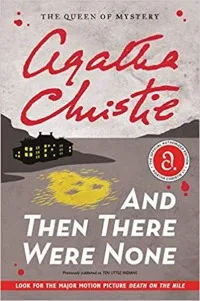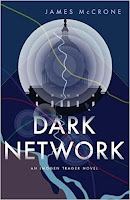“And Then There Were None” by Agatha Christie – Never Trust Strangers
I’m sure that many, if not all of you are to some extent familiar with the name Agatha Christie. If you aren't she is perhaps the world’s most popular detective fiction writer, writing some of the most well-constructed murder mysteries by anyone’s standard, and even giving birth to two of literature’s most capable investigators, Hercule Poirot and Miss Marple.
Without a doubt her most famous novel is And Then There Were None (the original title had a word in it which by today’s standards would be considered racist), with there being multiple movie adaptations of the story.
In any case, And Then There Were None is about a group of ten strangers who are brought to an island by a letter from a certain U.N. Owen. Even though the hospitality leaves nothing to be desired, the guests are somewhat alarmed at a lack of any real host. All is fine and dandy, until they discover that one of them has been murdered throughout the night, and a collection of ten little Indian figurines has one of its pieces missing.
As another victim is claimed, it is discovered that whoever the killer is, he or she is following an old nursery rhyme, "Ten Little Indians". While the possibility of someone else being on the island isn't exactly ruled out, it becomes apparent that the killer is indeed one of the ten strangers, but who?
If I had a gun pointed to my head and had to pick the absolute best whodunit mystery on the planet, this is the one I would choose (please keep in mind this is simply my opinion).
Every single element in this book has been crafted to perfection: each one of the ten characters is interesting, and while in some cases you don’t get a whole lot of backstory, you can feel the importance of everyone’s presence.
While it is true that some of them may feel a tad stereotypical today, it is safe to say that this novel is one of the factors responsible for the creation of those stereotypes in the first place.
As far as the story goes, this is perhaps one of the most engaging mysteries for two reasons. First, if you are hell bent on solving the mystery before all is revealed, you are actually given enough clues to do so, although it will require a powerful brain and a very good sense of logical reasoning.
Second of all, you are always kept on edge, regardless of what happens. Because no character is beyond suspicion, you are drawn to pay close attention to all the details, not to mention that you just get hungry in anticipation for the next clue or piece of information.
Because of the nature of the story, the setting and the small cast of characters, it is quite easy to keep up with the events at all times; chances are you’ll only get lost if you’re tired.
All in all, And There Were None will always be the book which, in my eyes, defines the isolated murder mystery genre the best, and is definitely worth a read for anyone who hasn’t had the chance to get to it yet.
Without a doubt her most famous novel is And Then There Were None (the original title had a word in it which by today’s standards would be considered racist), with there being multiple movie adaptations of the story.
In any case, And Then There Were None is about a group of ten strangers who are brought to an island by a letter from a certain U.N. Owen. Even though the hospitality leaves nothing to be desired, the guests are somewhat alarmed at a lack of any real host. All is fine and dandy, until they discover that one of them has been murdered throughout the night, and a collection of ten little Indian figurines has one of its pieces missing.
As another victim is claimed, it is discovered that whoever the killer is, he or she is following an old nursery rhyme, "Ten Little Indians". While the possibility of someone else being on the island isn't exactly ruled out, it becomes apparent that the killer is indeed one of the ten strangers, but who?
If I had a gun pointed to my head and had to pick the absolute best whodunit mystery on the planet, this is the one I would choose (please keep in mind this is simply my opinion).
Every single element in this book has been crafted to perfection: each one of the ten characters is interesting, and while in some cases you don’t get a whole lot of backstory, you can feel the importance of everyone’s presence.
While it is true that some of them may feel a tad stereotypical today, it is safe to say that this novel is one of the factors responsible for the creation of those stereotypes in the first place.
As far as the story goes, this is perhaps one of the most engaging mysteries for two reasons. First, if you are hell bent on solving the mystery before all is revealed, you are actually given enough clues to do so, although it will require a powerful brain and a very good sense of logical reasoning.
Second of all, you are always kept on edge, regardless of what happens. Because no character is beyond suspicion, you are drawn to pay close attention to all the details, not to mention that you just get hungry in anticipation for the next clue or piece of information.
Because of the nature of the story, the setting and the small cast of characters, it is quite easy to keep up with the events at all times; chances are you’ll only get lost if you’re tired.
All in all, And There Were None will always be the book which, in my eyes, defines the isolated murder mystery genre the best, and is definitely worth a read for anyone who hasn’t had the chance to get to it yet.
 | Agatha Christie |








Comments
Post a Comment